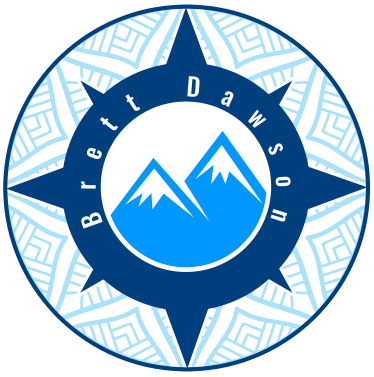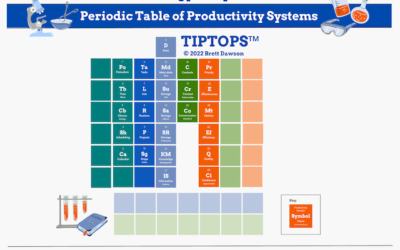Blogosphere comets from the ThOort Cloud
Frameworks speed up problem analysis
Context, objectivity and structure gives meaning to information and makes it possible to analyse problems. When analysing time management and productivity problems it helps to have a framework that defines the full ‘scope of work’ or ‘solution space’ of all the possible issues you may be struggling with. This article describes the structure of the TIPTOPS™ framework for analysing time management problems.
How to diagnose the root cause of problems
If you’re struggling with time and task management and feeling overwhelmed then it may be worth stopping to figure out what the problem is so that you can find a solution. However, finding solutions to problems isn’t always easy. In this article I describe how to diagnose problems and how this applies to understanding time management problems.
How to overcome overwhelm and fix time management problems
If you’re feeling overwhelmed and you’re not getting the results you want then you probably don’t have time for a time management course. What you need is a just-in-time time management miracle. This is what you need to do…
Just-in-time time management
You’re feeling overwhelmed, you’re not getting the results you want and time is spiralling away into a vortex of the past with the event horizon of complete chaos snapping at your arse. You don’t have time for a time management course, you need a just-in-time time management miracle. This is what you need to do…
We don’t have a climate change problem
We don’t have a climate change problem, we have an economics problem. While working as Director of Renewable Energy for the South African government almost 20 years ago I came to the conclusion that the primary reason we had a climate change problem was not that there weren’t technical solutions but because there was something wrong with the way that the conventions of dominant economics thinking disempowered the solutions from being implemented.
How to implement change with three simple ideas
The way to implement change in your life is to manipulate time and space. It’s an Einstein trick. You don’t need any maths or formulas to do this. Promise. Let me explain how this works…
Why are values important?
Values form the principles and standards for your behaviour and are based on what is important to you. Values have a significant impact on your choices in your life and career. Different people have different values but this doesn’t make one person’s set of values right or wrong, and it certainly doesn’t mean that they are better or worse than another set of values. Let’s have a closer look at values.
Why do some relationships break down?
Most relationships start off in the idealistic elastic zone. Healthy relationships operate in the plastic deformation zones of negotiation and conflict resolution where effective communications is arguably the most important success factor. Inevitably there will be some stress associated with the negotiation and conflict zones but too much stress can push a relationship over the edge. Let’s have a look at some of these stress drivers.
Locus of control
The book I am writing is also about making proactive changes from an internal locus of control. The concept of locus of control was developed by Julian Rotter in 1954 and in my opinion, is an essential personal leadership skill. Your locus of control is the belief you have about how much control you have over the things that happen in your life.
Communication
Relationships rely on communication for success. Relationships inevitably experience varying degrees of stress over time and this requires negotiation and conflict resolution skills, both of which rely heavily on communication. So, in order to establish and maintain healthy relationships let’s have a closer look at the art and science of communication.
Recalibrate your personal compass
Alignment drift leads to existential crisis. Whether it’s a life stage transition or just a shift in relative priorities, the effect is always the same – an alignment gap opens up between what you were interested in in the past and what you are interested in now. Quite often it happens quite slowly. I call this alignment drift and it’s the primary reason for the emergence of a dysphoric existential crisis in life.
How to improve your quality of life
Quality of life = Happiness. It’s a simple formula, and there are five pillars to happiness. These are all related to how you choose to spend your time. If you manage these well you will be happy.
Dimensions of Change
Things don’t always work out the way you want them to and making the changes you need to correct the problem can be challenging. In some cases, the timing can be critical and you may find yourself with a once-in-a-lifetime opportunity to make a meaningful change. In this article, I want to introduce you to the most important aspects of making a change, which I refer to as the eight dimensions of change.
Change & Transition
Sometimes external events or changes lead to internal transitions and sometimes it’s the internal transitions that lead to decisions and actions that result in external changes and events. Change is a dual process of external events and internal transformations of the heart and mind. In this article, I am going to help you understand the transformation cycle that all changes go through and what you can do to avoid making the common mistakes that people sometimes make when they experience change. This will help you prepare for what’s coming and empower you to manage future changes.














